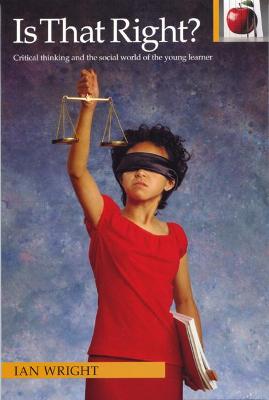Pippin Teacher's Library
1 primary work
Book 35
"When I discovered critical thinking, my teaching changed. Instead of focusing on questions that had "right" answers, I wanted children to think through situations where the answer was in doubt. I expected them to decide which of two or more conflicting theories, procedures, beliefs, observations, actions, or expert claims made most sense. Instead of teaching as if I - or the textbook author or anyone else - had all the right answers, I encouraged children to think for themselves and to become accustomed to living with uncertainty. I tried to help them construct arguments to support their conclusions and to debate with others about the merits of their decisions." In these days of emphasis on skills instruction and high-stakes assessment, it's easy to lose track of one of the main goals of education: to help children become capable thinkers. The ability to think carefully and critically allows them to evaluate information, solve problems, make reasoned decisions and enjoy a deeper understanding of subject matter. Without it, children cannot grow into competent, responsible citizens or valued employees.
Yet critical thinking is not emphasized in teacher education, and much instructional and curricular material makes no mention of it. Here is a book to address this gap. Brimming with practical activities and assessment approaches, framed by discussion of the theory behind critical thinking, Is That Right? offers teachers of learners aged five to fourteen rich ideas for infusing critical thinking across the curriculum. And as children learn to bring critical thought to their classroom lives, they extend it into their social worlds. As Ian Wright puts it, "We seem able to solve all kinds of technical problems, such as how to build a space platform or develop a faster computer chip, but we do not seem to fare so well with problems involving our social and personal lives. Science cannot answer questions about what we should do or what is good or bad. It cannot tell us who makes a good friend. It is here that critical thinking has practical value." Audience: Teachers of learners aged five to 14.
Yet critical thinking is not emphasized in teacher education, and much instructional and curricular material makes no mention of it. Here is a book to address this gap. Brimming with practical activities and assessment approaches, framed by discussion of the theory behind critical thinking, Is That Right? offers teachers of learners aged five to fourteen rich ideas for infusing critical thinking across the curriculum. And as children learn to bring critical thought to their classroom lives, they extend it into their social worlds. As Ian Wright puts it, "We seem able to solve all kinds of technical problems, such as how to build a space platform or develop a faster computer chip, but we do not seem to fare so well with problems involving our social and personal lives. Science cannot answer questions about what we should do or what is good or bad. It cannot tell us who makes a good friend. It is here that critical thinking has practical value." Audience: Teachers of learners aged five to 14.
